Plastic Jesus and The Crucifixion of Kanye West
Photos courtesy of Plastic Jesus and Getty/Alberto Rodriguez and Matt Winkelmeyer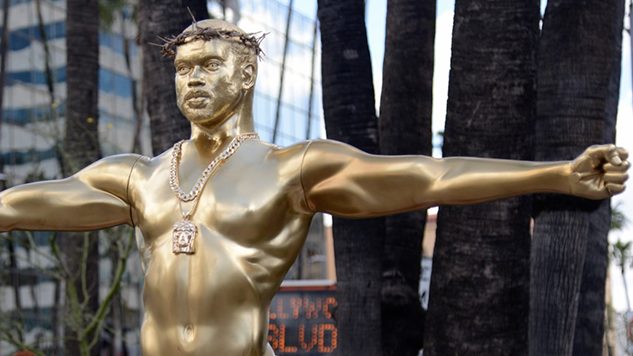
As morning broke and the skies cleared over Hollywood Boulevard on this Oscars Week Wednesday, pedestrians found themselves greeted by a life-size golden idol. 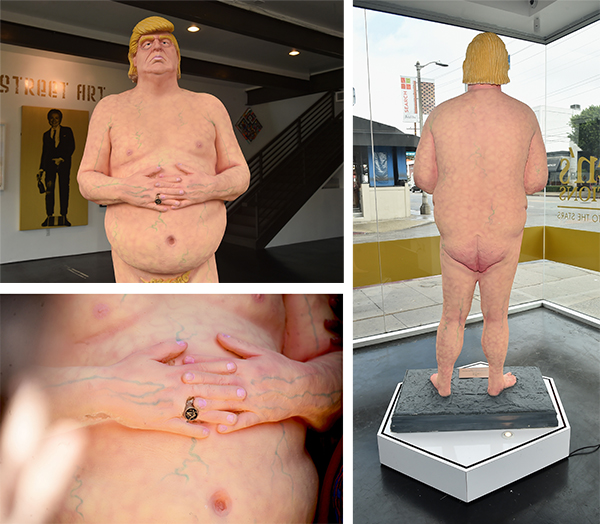 But it wasn’t fashioned in the ordinary likeness of the gleaming, faceless awards that will be doled out this weekend. This idol was formed in the image of hip-hop superstar and fashion mogul, Kanye West.
But it wasn’t fashioned in the ordinary likeness of the gleaming, faceless awards that will be doled out this weekend. This idol was formed in the image of hip-hop superstar and fashion mogul, Kanye West.
The Los Angeles street artist known only as “Plastic Jesus” created the gold, resin-molded figure in collaboration with Joshua “Ginger” Monroe. Ginger is the monster-making sculptor behind the naked Donald Trump statue haunting your nightmares.
Their latest work follows a years’ long tradition of unmasking real issues going unnoticed amidst the glitz of celebrity. The same year Phillip Seymour Hoffman died, Plastic Jesus transformed the Oscar statue into a heroin-injecting junkie. Another reinterpretation by the British-born guerilla artist featured the golden idol on all fours in front of Elvis’s Hollywood star.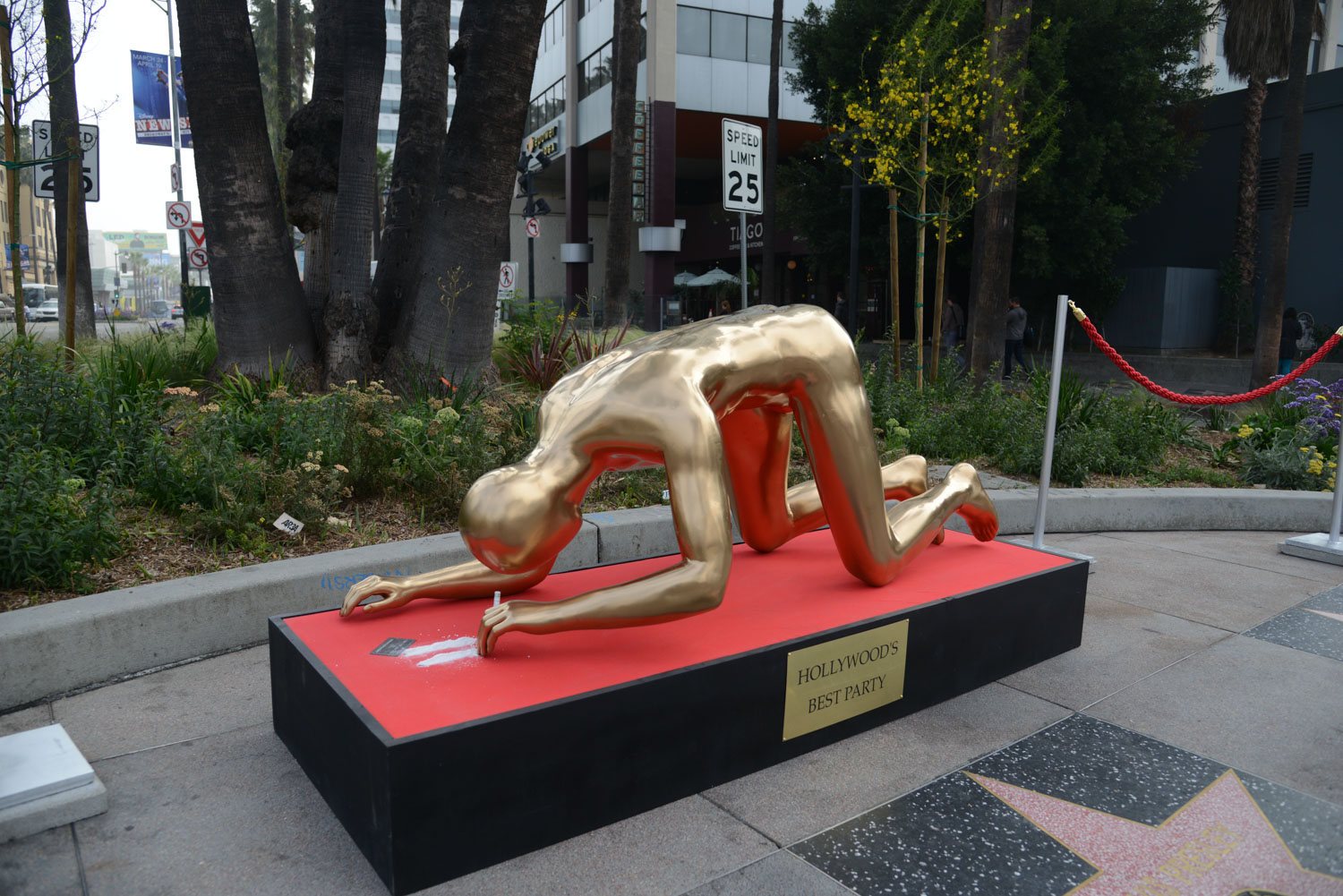
Putting Mr. West in the company of the King, the other king and the late PSH was certainly intentional. But this is hardly the first time we’ve seen Kanye West crucified for the sake of art. Who could forget that thorny Rolling Stone cover or Yeezus, the album featuring songs like ‘I Am A God’?
Paste writer Ryan Reed said at the time that the “rhythmically rote electro-buzz inflates Kanye’s legendary ego to (literally) biblical proportions.”
In a statement on his website, Plastic Jesus remarked, “We have built Kanye West into some kind of god-like idol. I believe he’s a genius when it comes to writing and producing but he’s human. When we build people into idols, we have expectations, and if they fail to meet those expectations, we crucify them.”

The crucifixion of Kanye West is just one of the many tongue-in-cheek installed works put forth by the pseudonymous artist who is also behind the “No Trump Anytime” street signs and the tiny concrete wall erected around Trump’s Hollywood star last July.
Paste spoke with Plastic Jesus ahead of his February 25 show with Billy Idol guitarist Billy Morrison. We talked about their upcoming show, Anesthesia – The Art of Oblivion, critiquing culture and the heavy responsibility of producing political art in the age of Trump.
Paste: Since the beginning, really, your work has been filled with messages concerning culture, society, and democracy. How is the current political climate affecting the work you’re putting out and what is the audience response?
Plastic Jesus: I was really hoping that post-election day, I could get back to creating art about cultural issues and current affairs issues without being too overtly and too heavily political. Unfortunately, Trump’s election to President of the United States put an immediate stop to that. 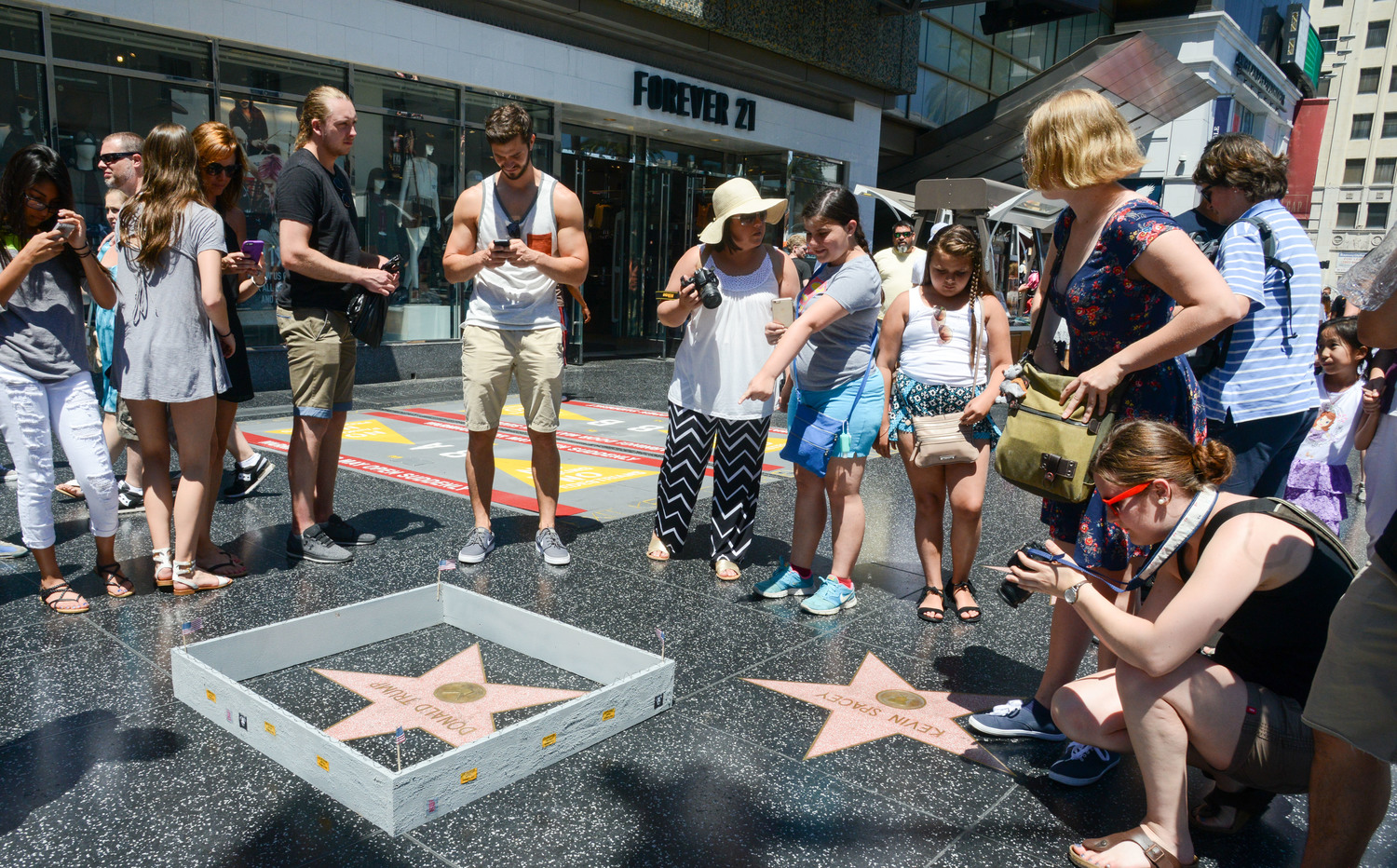 Now there’s some sort of expectation, and I suppose a responsibility to myself and other artists, to continue a political agenda or a political dialogue. The current political situation in the U.S. is certainly shaping my art output, not really through choice.
Now there’s some sort of expectation, and I suppose a responsibility to myself and other artists, to continue a political agenda or a political dialogue. The current political situation in the U.S. is certainly shaping my art output, not really through choice.
When you start producing political art, street or any other form, there’s an expectation from the audience that you will continue to do that and once you start doing that, your audience doesn’t want to see nice, jovial images nor any minor cultural points that you want to raise. They’re expecting something hard-hitting and political, and it’s quite a responsibility really.
Paste: As a street artist, how do you translate your normal ways of displaying your work to an art show setting?
Plastic Jesus: Well, as a street artist it’s quite strange selling your art to collectors and even investors. I try to avoid the whole gallery thing; I don’t agree with a gallery kind of mindset as a business. I think an audience, whether it’s collectors or street art fans or whomever, should connect directly with the artist. I’m not talking purely on a financial basis, but without that feedback—if you get stuck in the filtering system of a gallery—you don’t get the feedback that you need from your audience, whether your work is reaching the right spot as it were. Obviously it’s a little easier with social media now to judge and to gauge that. I always try to engage with people on social media, even those who oppose my opinions and what I do. I think it’s important to get messages over. I’ve got a number of followers who I engage with frequently and they are completely politically opposed to me, but we have a grown up, sensible, respectful conversation and that’s what democracy is all about I think.
Paste: It’s so astonishing to me—that you’re able to live out this anonymous identity, yet you are so incredibly engaging on social media. It’s a dichotomy that I think almost never occurs, especially in the art world.
Plastic Jesus: No, it doesn’t, and of course we look at Banksy who’s the most hugely political artist out there. There’s no engagement out there whatsoever from Banksy, and that’s his choice. But, I spent 20 years as a photojournalist, so I know how frustrating it is to want to get more background on a piece of art and just feel that cold response, so I try to engage with people. 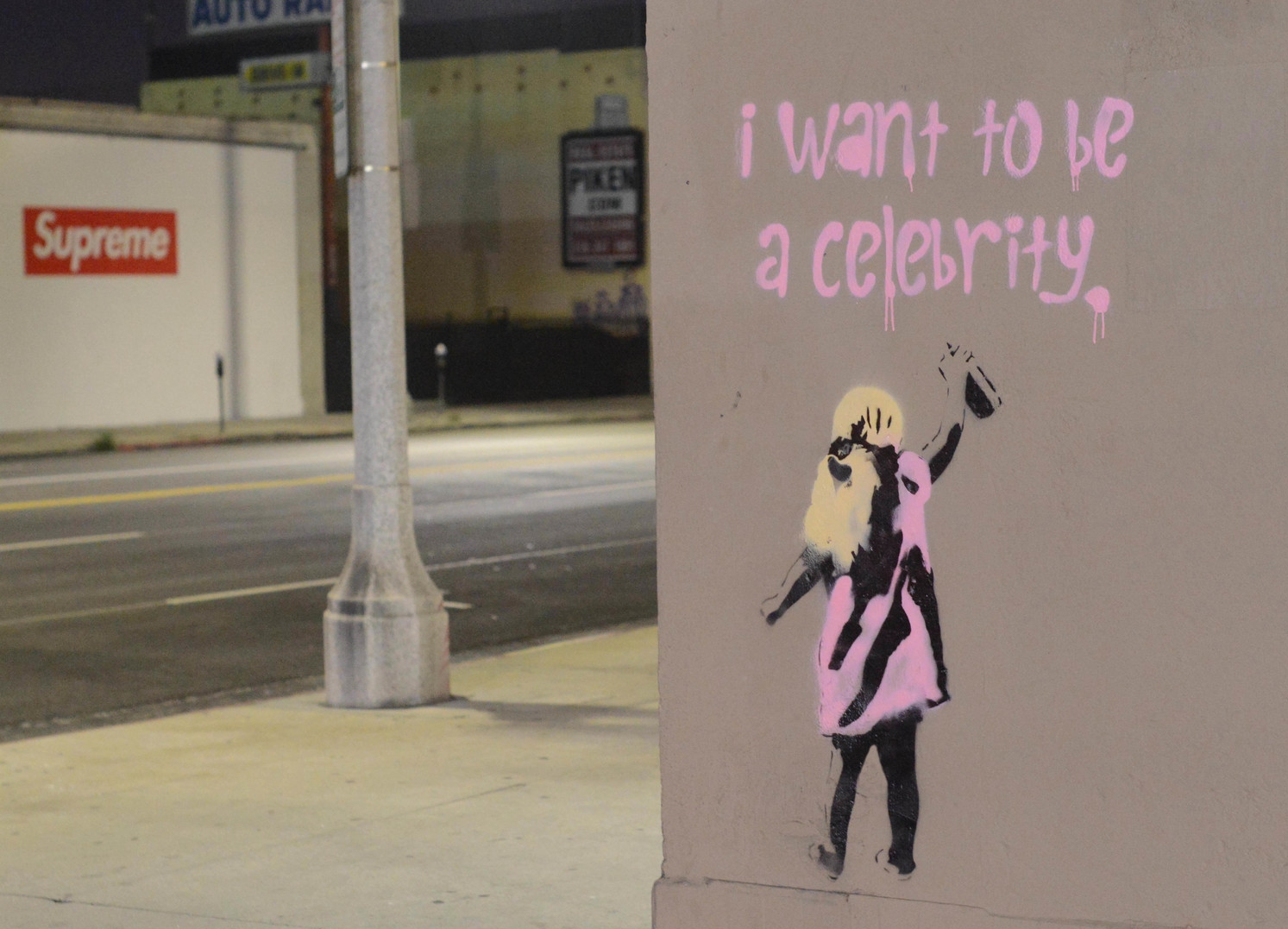 I think it’s a conscious decision; I like that engagement. I think politics and democracy especially are there for everybody to debate and the more we do it, the more balanced democracy we’ll have. I wish more balanced and informed debate took place at every level right up to the presidency really.
I think it’s a conscious decision; I like that engagement. I think politics and democracy especially are there for everybody to debate and the more we do it, the more balanced democracy we’ll have. I wish more balanced and informed debate took place at every level right up to the presidency really.
Paste: And how did you get here—from working as a photojournalist in the UK to becoming a culture-confronting Los Angeles street artist?
Plastic Jesus: Well, although I was doing a lot of news features as a photojournalist, I was also involved in investigation work, covering things like human trafficking and the child sex industry, drugs, prostitution, and so on. So, I came over here ten years ago for an investigation and never left. I got into street art almost by accident. Although, I’ve always been a lover of street art. In fact, in the 70s, there was a graffiti campaign around major cities in the UK, and probably most people in their 40s in the UK would know this, but the graffiti just said, “George Davis is Innocent.” Now, George Davis was imprisoned for an armed robbery and to me as a young child going around London in my parents’ car, I just thought, Why doesn’t his family just tell the newspapers or the police that he’s innocent, and they’ll let him go, and then it occurred to me that there are other ways, other mediums of getting messages out there that aren’t being listened to. And that’s very much the way I operate now, by using another channel, another medium.
So, the first [golden idol] piece I did was Lance Armstrong on his bike connected up to an IV strip, right around the same time as his doping confession on Oprah Winfrey. 
Combining the direct impact of that image with my ability to get stories out as a journalist, it got picked up by a lot of mainstream media, and I thought, this is a great way to get messages out there, messages that I believe in that aren’t normally seen, so that’s where the two—the photojournalist and the artist—first merged together.
Paste: I’ve noticed that you repurpose a lot of prosaic forms of media in your work. You pretty regularly use things like dollar bills, credit cards and street signs in place of the traditional canvas. Can you tell me more about why your work takes on the forms it does?
Plastic Jesus: I’ve always been creative and I really don’t write very well, so art is a great way for me to convey things visually. Sometimes I’d be on assignment for two to three weeks at a time as a photojournalist and I’d need to select just one image that would convey the entire story, backstory, and emotion behind that assignment. So for me, it’s always been about engaging and conveying messages with images. Of course, I like playing with things within modern society and culture and using those items as backdrops when it comes to the message I’m trying to get across. Sometimes, it’s a clearly thought out strategy in terms of the presentation and the medium of the piece.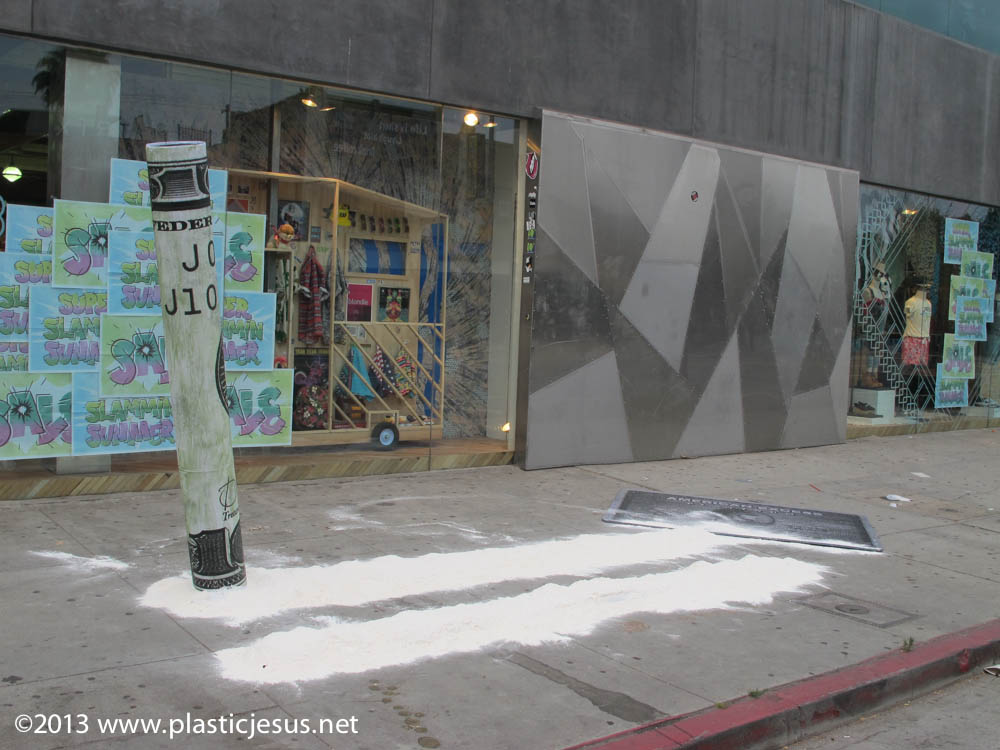 One piece I did was 12-foot lines of cocaine along the street with an eight-foot rolled up $100 bill sticking out and an eight-foot by four-foot credit card. I mean, yeah, it was fun, people were coming along the street engaging with it, taking selfies, chatting, and being amused by it. But the whole point of the piece was to say there’s so much cocaine here within society, but nobody’s talking about it. Does it really take 12-foot-long lines of cocaine for people to fucking talk about it?
One piece I did was 12-foot lines of cocaine along the street with an eight-foot rolled up $100 bill sticking out and an eight-foot by four-foot credit card. I mean, yeah, it was fun, people were coming along the street engaging with it, taking selfies, chatting, and being amused by it. But the whole point of the piece was to say there’s so much cocaine here within society, but nobody’s talking about it. Does it really take 12-foot-long lines of cocaine for people to fucking talk about it?
Now, with the street signs and repeated messages like “Stop Making Stupid People Famous,” the point of that is not to say, we don’t need people like the Kardashians in our lives; 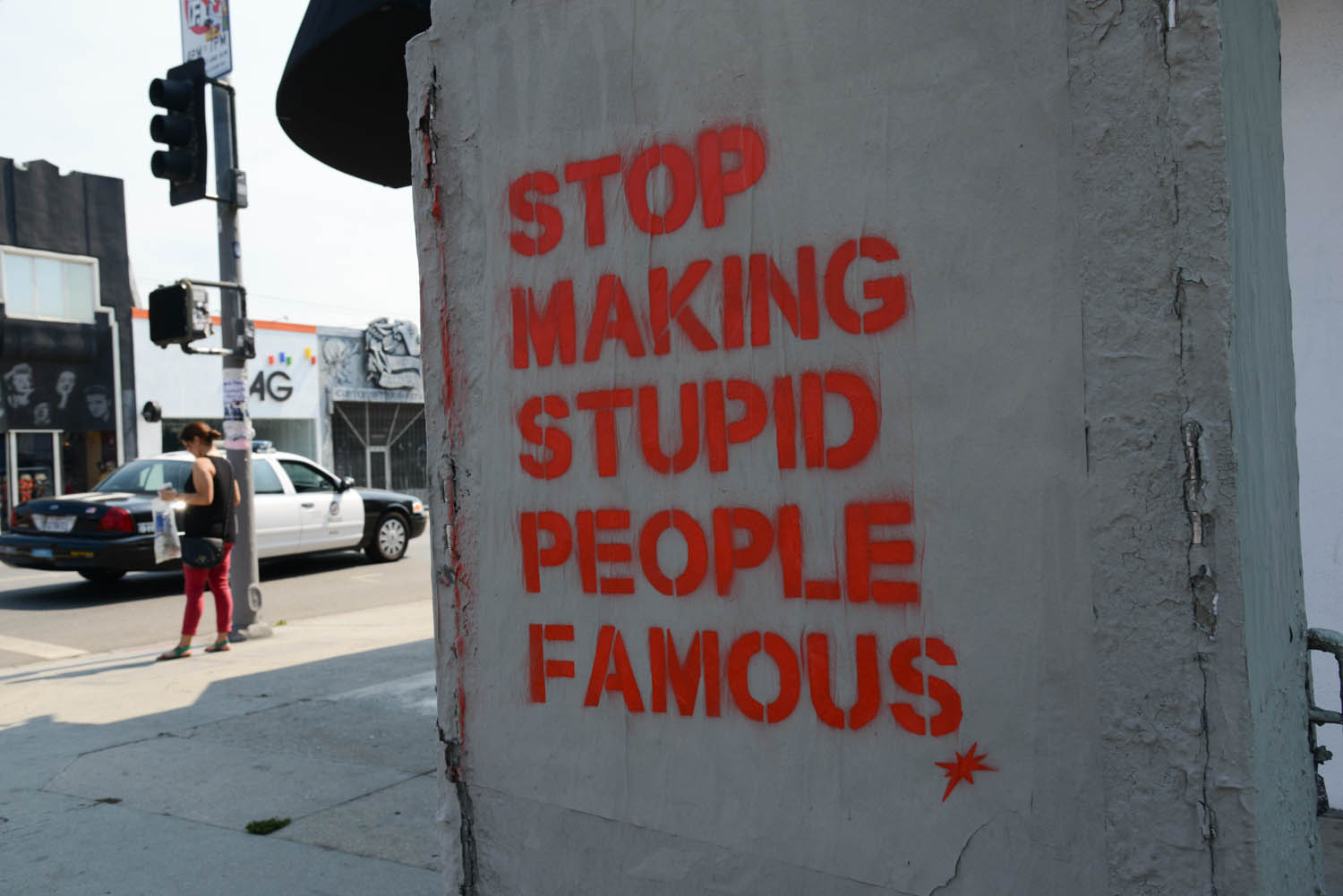 I have nothing against the Kardashians or Kanye or anyone like that. The criticism I have is for us. We are the people that are making them famous. We are buying the tabloids and making these people famous by consuming this content; if there was no market for it, we wouldn’t be fed it.
I have nothing against the Kardashians or Kanye or anyone like that. The criticism I have is for us. We are the people that are making them famous. We are buying the tabloids and making these people famous by consuming this content; if there was no market for it, we wouldn’t be fed it.
Paste: A lot of your pieces have been viewed as these overnight stunts that come and leave us almost as quickly as they first appeared. Where does this sort of erasability come from and why is it important to your work to let these installed works linger for just 24 hours or so before taking them away?
Plastic Jesus: That’s almost a conscious effort. I can remember having front page stories that would make the news for one day, but once that news had been consumed, it was no longer news, it was no longer relevant. Now, street art by nature usually has a very limited lifespan, sometimes it can be as low as just a few hours. But I like that because as you drive around the street, you have this constant evolution. You can drive along Melrose here in Los Angeles, and just overnight, the whole scene will change as pieces of art are taken down and painted over. So I guess that probably comes from my background as a journalist—that important timing of art in order to get on that peak of public interest.
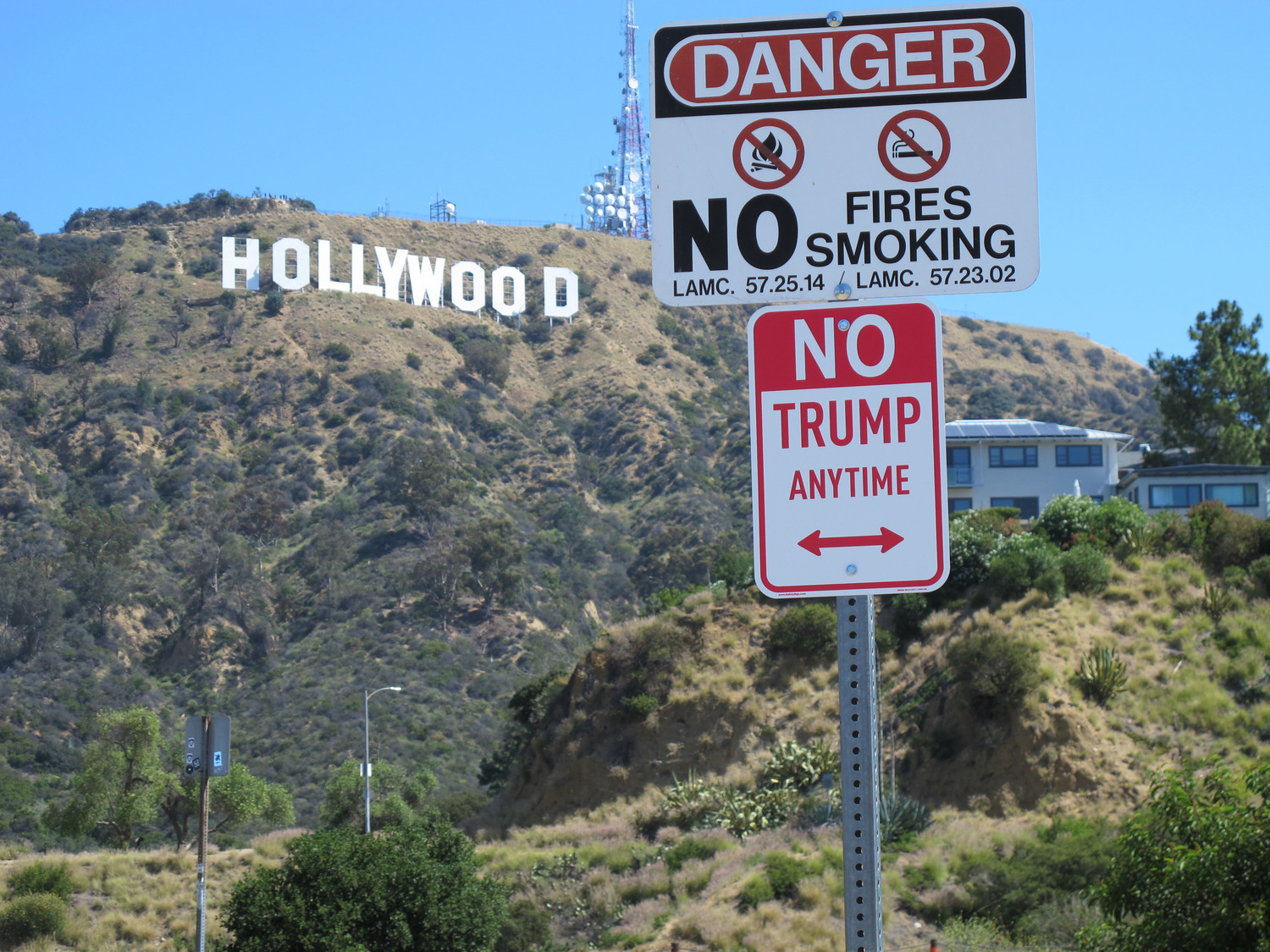
Paste: Can you tell me a bit about some of the pieces that will be in Saturday’s show?
Plastic Jesus: I’ve got a brand new piece, which is called “15 minutes” and it pokes at the vanity of the concept of “15 minutes of fame” that everybody in this city and beyond is constantly seeking. I’ve also done some collaborations with the other artist, Billy Morrison. We’ve created basically a series of idols, the purpose of which is to show how we ignore the reality of our lives and tack ourselves onto these idols and Hollywood superstars, in order to numb out our real existence. I’ve also got a piece called “Envy” which is based on materialism, specifically the materialism of young children today and how they’re being fed with a need for products and stuff in their lives rather than just a deeper connection with society.
One thing this election did do was underline my responsibility as an artist to continue to send out cultural and political messages. I feel like I have a renewed desire to make art for the people that can’t be seen and can’t be heard in a medium that everybody can access. •
Plastic Jesus and Billy Morrison’s works are on view in Anesthesia – The Art of Oblivion, a public show held February 25th from 12 – 9 pm at Gibson Brands Sunset, formerly Tower Records. 8801 Sunset Blvd, Los Angeles.
Leah Rosenzweig is an Arts & Culture writer with a degree in Existential Philosophy. She writes for Art+Auction and Modern Painters magazines in New York and exercises her right to supercommute from sunny Philadelphia.